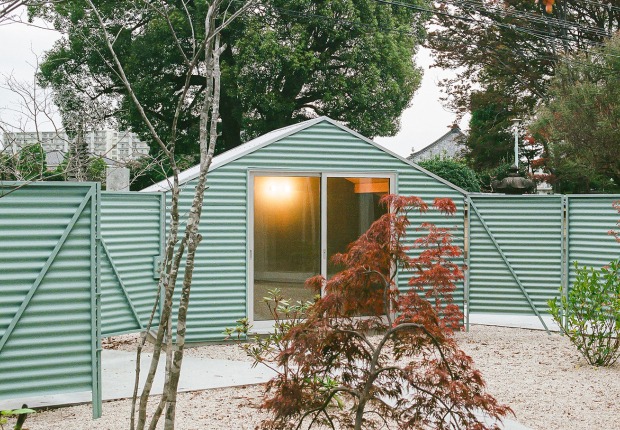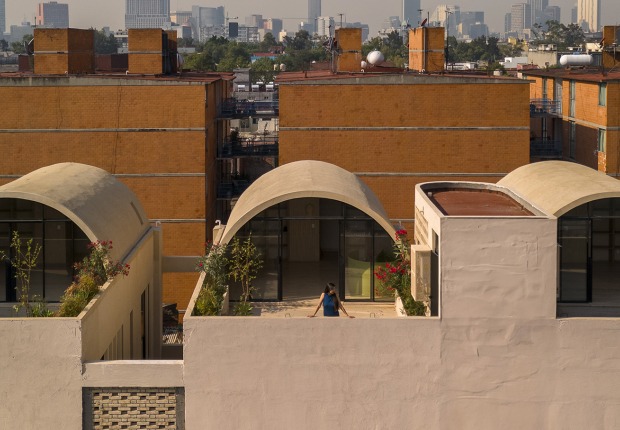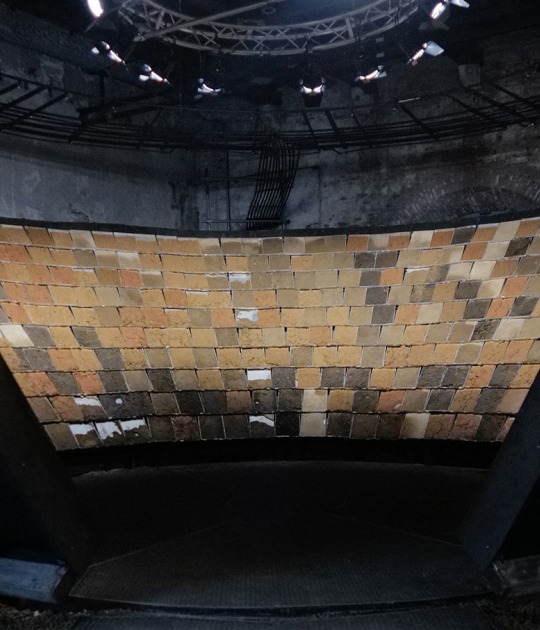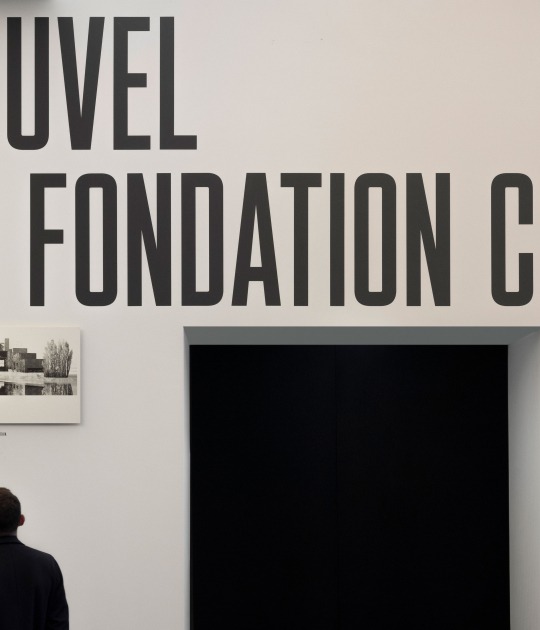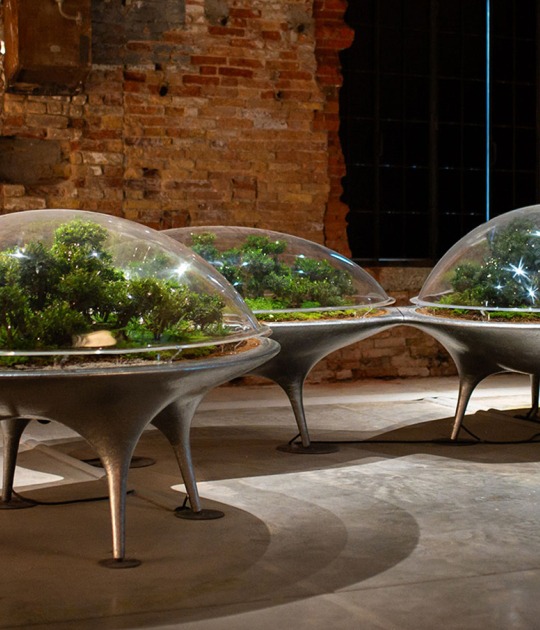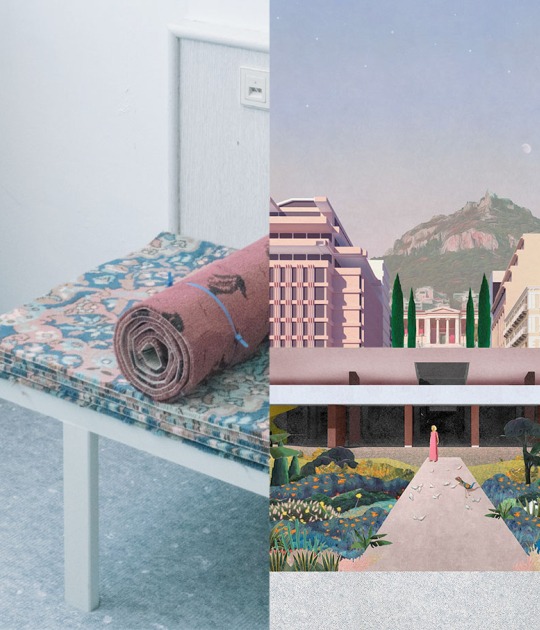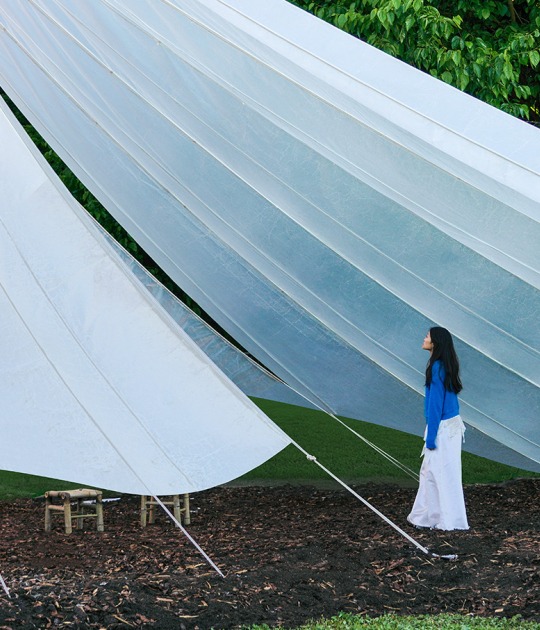In addition to this installation, there is another way to learn more about the exhibition "Architecture as Measure", since it extends to a website that serves as its main publication platform. This website will present contents that explore topics of interest and that have been written by the team of curators of the pavilion and invited collaborators periodically during the biennial.
The website can be found here.
Description of project by Neyran Turan
In light of the current climate crisis, what can architecture contribute towards a new planetary imagination of our contemporary environment beyond environmentalism and technological determinism? Rather than limiting the role of design simply to a solution to the problem of climate change, can we speculate on architecture as a measure through which the environment might be imagined? Architecture as Measure positions climate change as a cultural and political idea that requires a renewed architectural environmental imagination.
The Architecture as Measure project defines the planetary as the vast geo-temporal scales through which climate emergency accelerates. But it starts with the provocation that instead of seeing planetary imagination purely as an isolated idea of preserving nature, or as technological management or as visualization, it is important, at this moment, for architecture to consider its potential from within its inner workings. Architecture as Measure proposes that architecture needs to see larger planetary questions and the everyday aspects of its own making as one and the same thing. The planetary is about the here and now; it is embedded in everything we do, and it is waiting for a long-overdue radical change.
Presented through an installation, a website publication, and storytelling, the Architecture as Measure project for the Pavilion of Turkey at the 17th International Architecture Exhibition, la Biennale di Venezia titled How Will We Live Together? focuses on the politics and nuances of the seemingly mundane aspects and sites of architectural construction, juxtaposing them with their respective planetary counterparts through geographies of material extraction, supply chains, maintenance and care in Turkey and beyond.
In the context of climate emergency, Architecture as Measure positions architecture as a measure to provoke an alternative planetary imagination that can help assess our place on Earth and our role in relation to those with whom we live together: as architects with the actors of other disciplines and domains of work, and as a species alongside more-than-human others.
Taking the exhibition curator Neyran Turan’s recently published book Architecture as Measure (New York and Barcelona: Actar Publishers, 2020) as a theoretical preamble, the exhibition speculates on architecture as a measure against which such an imagination might be read.
Why the emphasis on imagination at this moment when urgent action is already overdue? It is precisely because of the exigency of our current moment that we are driven to the significance of imagination. First, imagination matters because, as evidenced with the recent COVID-19 pandemic and the Black Lives Matter protests throughout the world, the intricacies of systemic injustice and climate emergency call for unconventional approaches that can make sense of the collision between the quotidian and the planetary—the vast geo-temporal scales through which climate emergency accelerates. If there is a close link between the pandemic and the proliferation of deforestation, biodiversity loss, unrestricted agriculture, extraction, and urbanization in remote areas, this means that the planetary scale of climate emergency and our everyday lives are not only intricately correlated but are exactly the same thing.
Second, imagination matters because, as has been pointed out by many geographers, climate change is not about a self-righteous battle between “nature” and “humans,” but the consequence of centuries of extractivism, colonialism dispossession, and racism. Simply put, the humans who are the most responsible for climate change are the most insulated from its effects, whereas those who are the least accountable feel the greatest effects of this slow violence. Consider, for instance, how the pandemic has been disproportionately affecting the most vulnerable communities (lower-wealth communities, people of color, Indigenous people, and the elderly, etc.), which correlates to their susceptibility to other ongoing environmental problems. In other words, the pandemic is yet another reminder that the idea of the planetary is not a theoretical concept in isolation. On the contrary, the planetary is about the here and now; it is embedded in everything we do, and it is waiting for a long-overdue radical change.
Third, imagination matters because it is the ultimate and most necessary ingredient for meaningful structural change in architecture and related design disciplines. This means re-assessing, decolonizing, and re-structuring—individually and collectively—the worlds we design, the institutions we build, and the systems of knowledge and value through which we see the world. An alternative environmental imagination is an important step towards that.
Instead of, on the one hand, pretending that inequalities of labor, colonialism, and resource extraction are external to the work that we do as architects, and on the other, dismissing questions of aesthetics and technique as trivial matters, what kinds of worlds are possible if we are truly willing to understand the embeddedness, the collision, and the specificities of these aspects within our practices and disciplinary imaginations? How can we bring a sensibility of care to the violence brought about by these inequalities and what is architecture’s role in that change? These questions are important not only for dismantling archaic assumptions and abolishing entrenched power structures in our discipline, but also for rebuilding future foundations towards alternative worlds.
As elaborated in Turan’s book, we invoke two complementary definitions of the term “measure” in the exhibition. Measuring something means to ascertain its degree by using an instrument, and also to scrutinize, to consider by taking pause and focusing inwardly. This alternative focus on the politics and nuances of the inner workings of architecture can have profound effects in triggering unconventional environmental imaginations. Think, for instance, of our contracts, building codes, technical standards, specification requirements, and other conventions of material extraction and supply chains, construction assembly, labor, maintenance and inspection. All of these components, and many others, not only have profound effects on the material practice of architecture, but also, at a much broader level, reflect our values and assumptions about what constitutes the idea of “the environment” for architecture. In other words, architecture’s imagination of its familiar interior is the very image of its planetary exterior.
The installation component of the exhibition comprises four dioramas, each focusing on specific sites of architecture, from resource extraction and material supply chains, to construction, maintenance, and care in Turkey. In addition to the installation, the exhibition extends onto a website as its main publication platform. Exploring topics of focus through four different formats—Paperwork, Episodes, Conversations, and Essays—the website presents content by the Pavilion’s curatorial team and the invited contributors, which will be published at regular intervals over the course of the Biennale.
The Paperwork section presents the exhibition’s main research content on the bureaucracy of architectural documents that enact, facilitate, and normalize the protocols of extraction, maintenance, logistics, and construction. Ranging from tables, to photographs, schemes, maps, reports, regulations, emails, lists, plans, certificates, spreadsheets, standards, receipts, schedule diagrams, contracts, timesheets, drawings, engravings, legends, and labels, this section presents material curated by the curatorial team along with invited contributions. Each seemingly quotidian document in the Paperwork section is accompanied by a short text that exposes the way in which the document produces, propagates, and enforces disciplinary norms, forms of labor, and absurd scenarios.
Through drawings and storytelling, the Episodes section captures specific environmental controversies in a series of selected sites in Turkey. Colliding the architectural and the planetary, the human and the more-than-human, the mythical and the everyday, the Episodes section restages selected content from the exhibition installation. The Conversations and the Essays sections present various invited contributions aligned with the themes of the exhibition.
Through its focus on the entangled relationship between the quotidian and the planetary, Architecture as Measure suggests another route for architecture’s relation to the world, in which it is more of an agent than a mere respondent. It aspires to provoke another form of inner focus and thus engagement for architecture.













